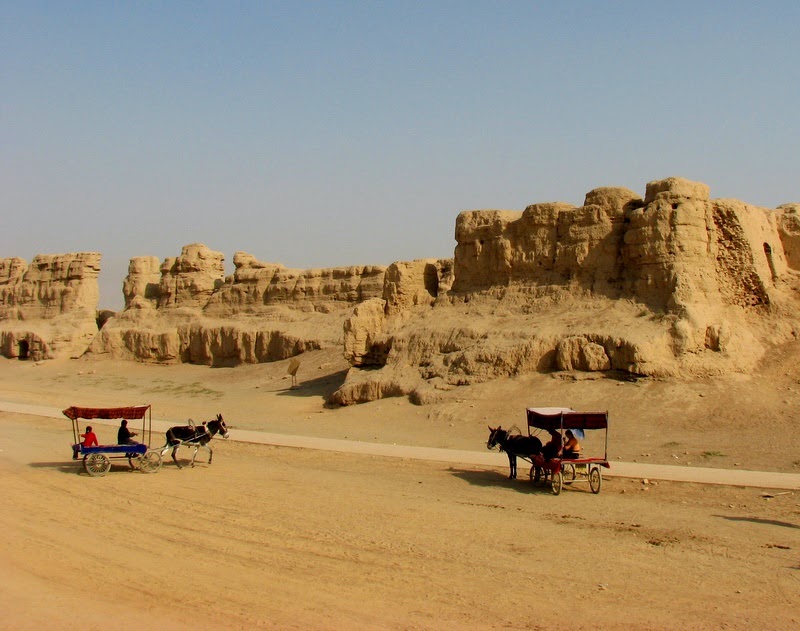The ancient town
of Gaochang was once the capital city of the
Gaochang (Kocho, Kharakhoja or "King
City ") Uigur Kingdom Flaming
Mountain , 45 km east of Turpan
City of the Xinjiang Uigur Autonomous
Region, Gaochang served as an important commercial and cultural center on the
ancient Silk Road and played an important role in the history of communication
between ancient China Flaming Mountain Gaochang , and
the ancient city of Jiaohe , are the
best-preserved ruins of the ancient cities in China
The city was
initially built as a garrison town in the first century B.C., called Gaochang
Wall, and later renamed Kharakhoja, Kocho or King City Silk Road . During
the successive dynasties, it was ruled as Gaochang
Prefecture , Gaochang
Kingdom and West Prefecture
The present
remains of Gaochang
City
The outer city had
a wall base of 12 meters thick, 11.5 meters high, with a perimeter of 5.4
kilometers. The outer side of the city wall was well preserved, with horse face
figures protruding outward. Three gates were open in the south wall, while the
other three walls each had 2 gates, of which the north gate open in the west
wall was the best preserved one. Built outside the city gates were a number of
small protective towns, equipped with defense facilities.
The inner city was
built in the center of the outer city, with well-preserved west and south
walls. Built earlier than the outer city, the inner city had a rectangular
shape. The palace, built in the uttermost north of the outer city, took the
north wall of the outer city as its north wall and the north wall of the inner
city as its south wall.
The Palace City
During late
19thcentury to early 20thcentury, grave robbers from Russia ,
Germany , Britain , and Japan
plundered cultural relics at the Ancient
Gaochang City China
For more
information, please visit http://top-chinatour.com




No comments:
Post a Comment